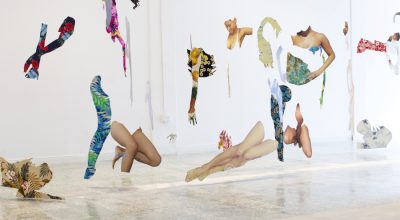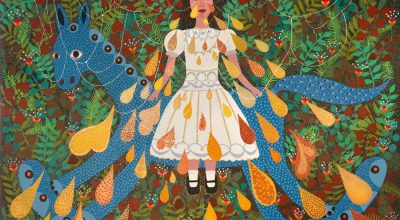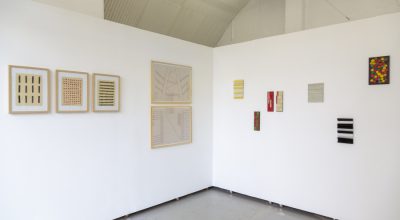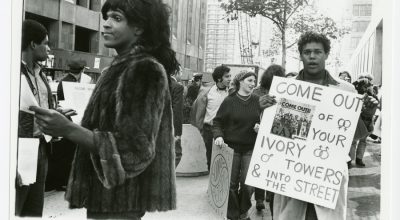English
Visions of Brazil:reimagining Modernity From Tarsila to Sonia
«Visions of Brazil: Reimagining Modernity from Tarsila to Sonia» positions works by Brazilian Modernists (such as Tarsila do Amaral and Alfredo Volpi) alongside others made by artists working outside of Modernism’s canonical time bracket (Sonia Gomes, Leonilson), allowing us to deconstruct what Modernism may stand for; and by rooting this rereading in politics, race, and class, we may support a visual narrative of Brazilian Modernism suspended on diversity and equality.
Miralda:unpacking The Archive
Henrique Faria New York presents «Unpacking the Archive», the first solo exhibition of the Catalan artist Miralda (1942, Terrassa, Spain) in the gallery and his first in New York City since 1991. This exhibition takes as its starting point the recently made works Marianne B and Marianne M (2017), which serve as visual repositories for the artist’s career to date and feature elements –in the form of figurines, ephemera and other archival materials in plexiglass boxes– that bring the constellation of Miralda’s various projects and installations more clearly into focus.
Resisting Paradise
Though geographically close, Caribbean artists are often unable to travel and show within the region. Intra-regional exchange is challenged by variations in language and colonial history, while flight routes prioritize the convenience of visitors coming from the United States or Europe, mirroring the migration patterns of many post colonial subjects. «Resisting Paradise» presents an opportunity to establish a much needed regional dialogue. The exhibition features works by Deborah Anzinger, Leasho Johnson and Joiri Minaya, showing how Caribbean artists are taking control of the narratives and images that convey ourselves to others. The artists, hailing from Jamaica and the Dominican Republic and its diasporas, work at the intersections of tourism, sexuality, gender, environmental concern, music, and the internet.
Gerardo Rosales:looking For a Hero or Whips, Whims, And Wigs And Gio Ponti is Just an Excuse
In his recent works, Rosales exposes issues of social inequality experienced by immigrants coming from Latin America in search of a better life in The United States. An immigrant himself, Rosales moved to Houston from his native Venezuela 19 years ago. Rosales’s art appropriates aesthetic genres associated to folk art and geometric abstraction to call attention on issues of class, race and gender, at times with biting humor, while other times with loaded, painful drama.
ANDRÉS PEREIRA PAZ: RADIO CARABUCO
The exhibition project «Radio Carabuco» at Künstlerhaus Bethanien has evolved from the podcast station of the same name created by Bolivian artist Andrés Pereira Paz (b.1986, La Paz). The starting point is the artist’s critical reflections on a vision of hell produced by the painter José López de los Ríos, created in 1664, in the town of Carabuco in Bolivia. This painting, commissioned by the Catholic church, can still be seen in Carabuco’s church on the shores of Lake Titicaca in La Paz.
Sheroanawe Hakihiiwe & Luis Romero:venezuelan Pavilion
This year, the Venezuelan Pavilion failed to open its doors to the public during the preview days of Venice Biennale amongst the political turmoil that has taken over the country since the beginning of 2019. Unintentionally, the closed pavilion became a powerful metaphor for the devastating effect of twenty years of disastrous cultural policies in the country -not to mention numerous other government policies that have led to the current humanitarian crisis. As a response to this episode, Kupfer invited Venezuelan artists Luis Romero and Sheroanawe Hakihiiwe to stage their own guerrilla pavilion in East London.
The Magnetic Fields
Curated by Cecilia Alemani, the exhibition focuses on the representation of the body –especially the female body– in order to analyse and contrast different notions of sexuality and self-definition. With its array of fetishes and totems, «The Magnetic Fields» presents a range of fantastical anatomies, in which the body is represented in a constant stream of transformation: dispossessed, dematerialised and recomposed. Installed as a chamber of wonders –or a camera oscura, to mention one of the over twenty important works by Man Ray on display– «The Magnetic Fields» alternates faces and portraits, anthropomorphic objects and bodies without organs, talismans and mutant dummies.
Art After Stonewall, 1969–1989
Coinciding with the 50th anniversary of the uprisings, «Art after Stonewall, 1969–1989» is a long-awaited and groundbreaking survey that features over 200 works of art and related visual materials exploring the impact of the LGBTQ liberation movement on visual culture. Presented in two parts—at the Leslie-Lohman Museum of Gay and Lesbian Art and New York University’s Grey Art Gallery — the exhibition features artworks by openly LGBTQ artists.
A Woman Looking at Men Looking at Women
The themes of the exhibition address several issues central to feminist theory, moving from conventions of female representation through sexual emancipation to the challenging and subversion of traditional gender roles. Artists include Magdalena Abakanowicz, Marlene Dumas, Carol Rama, Carla Accardi, Nicole Eisenman, Helena Almeida, Ida Appelbroog, Carolee Schneemann, Betty Tompkins, Judith Bernstein, Maria Lassnig, Louise Bourgeois, Natalia LL, Hannah Wilke, Geta Brătescu, and Sarah Lucas, among others.
Louis Fratino:come Softly to me
Drawing inspiration from personal experience and, more recently, photographic source material, Louis Fratino makes paintings and drawings of the male body. His work includes portraits, nudes, and intimate scenes of male couples engaged in activities ranging from the mundane to the graphically sexual. The result is a body of work that is a loving and honest expression of the contemporary gay experience.










